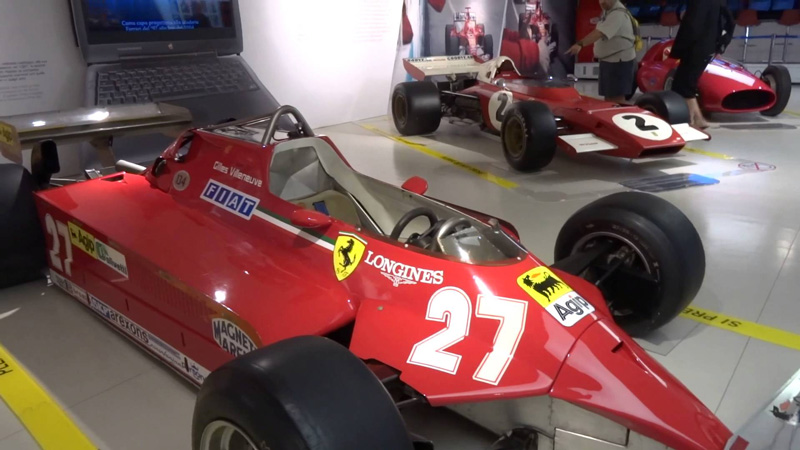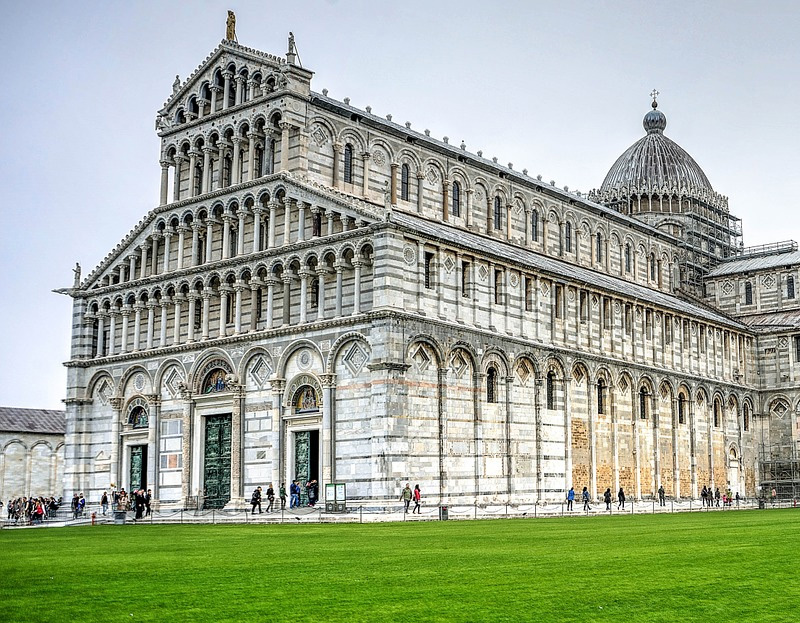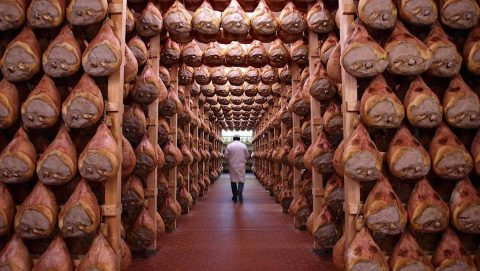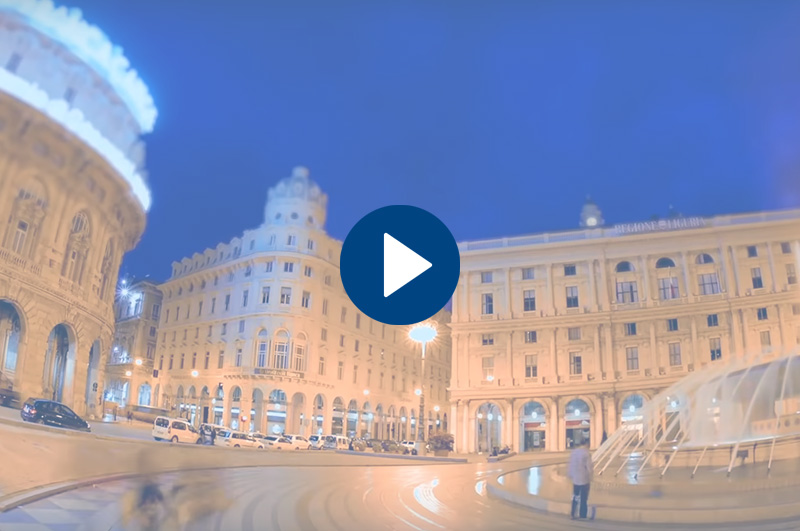5-day MANTEGNA PRIVATE TOUR
Milan, Florence, Pisa and Parma
A multi-coloured trip from Milan, the Fashion Capital of Italy, to Florence, the land of Dante, Leonardo da Vinci and Giotto, enjoying Italian gourmet delicacies on the way!
WHAT'S INCLUDED:
Accommodations in Double Room with Continental Breakfast (*):
- Days 1 & 5: 3* to 5* Hotel in Milan city centre
- Day 2 & 3: 3* to 5* Hotel in Florence city centre
- Day 4: 3* to 5* Hotel in Parma area
(*) The Hotel list is available upon request
Transfers (**):
- Day 2: Transfer to your accommodation in Florence – Stopovers in Modena and Maranello
- Day 4: Transfer to your accommodation in Parma area – Stopover in Pisa
(**)All transfers by private car (2 pax)/ minivan (3 to 6 pax)/ minibus (7 to 10 pax)
Private Guided Visits / Tours (***) / Activities:
- Day 1: 3-hour private walking tour of Milan city centre with an Authorised Tourist Guide
- Day 2: Visit of a Balsamic Vinegar of Modena producer with tastings
- Day 3: 3-hour private walking tour of Florence city centre with an Authorised Tourist Guide
- Day 5: Full-day excursion of Parma area with an Authorised Tourist Guide- Visits to a Parmesan Cheese factory and a Parma ham factory - Parmesan Cooking Class at a Villa in the countryside - Drop off at your accommodation in Milan
(***)All tours by private car (2 pax)/ minivan (3 to 6 pax)/ minibus (7 to 10 pax)
Admission Tickets to:
- Duomo Cathedral in Milan
- Museo Ferrari in Maranello
- Galleria dell’Accademia in Florence
- Leaning Tower in Pisa
Full emergency assistance 24 hours/day by our Back Office
List of recommended restaurants and deli shops along the itinerary
All taxes
Options:
- Pick up at Milan Airport /Railway Station at the start of the tour
- Accommodation in Milan the night before the start of the tour
- Admission to Galleria degli Uffizi in Florence
- Drop off at Milan Airport /Railway Station at the end of the tour
- Other options upon request
Day 1 - MILAN
Benvenuti in Italia, welcome to Milan!
Milan is, first of all, the Fashion Capital of Italy! The showrooms of all Italian manufacturers are located in the city, and here buyers from worldwide distribution find the one and only “Italian Style”! But Milan is not only fashion, it is also and above all art, beauty and culture! Piazza del Duomo is the geographical and historical centre of the city. Palaces surround it with arcades; in the middle, you can see the Duomo, one of Europe’s biggest Gothic cathedrals, whose construction started in the 14th and ended in the 20th century. And on the Gran Guglia, the cathedral’s highest spire, the Madonnina, a symbol of Milan, stands. On the left of the square, the 19th-century Galleria Vittorio Emanuele II links the grand Piazza del Duomo with Piazza della Scala, featuring mosaics and a wrought iron and glass roof.
Then stroll down the streets of “Quadrilatero D’Oro”, the heart of the fashion industry, admiring the shop windows of Prada, Armani, Versace, Ferragamo, Dolce & Gabbana and Valentino. The multi-concept store by Giorgio Armani, Spazio Armani, in the elegant Via Manzoni, extends for 6,000 square meters and offers fashion showrooms, furniture, flowers and hi-tech Sony equipment. After shopping, enjoy an aperitif or a coffee at the Emporio Armani Cafè upstairs or book a table at the Japanese restaurant Nobu. Or taste a gorgeous Cappuccino at Pasticceria Cova, as locals often do in via Montenapoleone, “Montenapo” for the Milanese!
At dinner, what about a tasty yellow “Risotto alla Milanese”? According to an ancient tradition, the Duomo is where Risotto alla Milanese was “born”, invented by a boy who worked for the stained glass artist Valerio di Fiandra, nicknamed “Zafferano” for its habit of adding spices to his colours. One day, he also put some saffron in the rice, and the result was a great success!

Day 2 – MODENA AND THE MOTOR VALLEY
Modena is renowned worldwide for the famous people - Enzo Ferrari and Luciano Pavarotti above all - who were born and lived here, and for some of its gastronomical products. The city is the capital of the so-called “Motor Valley”: actually, the factories of the famous Italian sports car makers Ferrari, De Tomaso, Lamborghini and Maserati are located here.
The city of Modena hosts little jewels of art, such as the Romanesque Cathedral, wholly constructed with white marble and located in the heart of Modena, in Piazza Grande. The Piazza with the Cathedral and the Ghirlandina Tower is one of the 48 Italian sites on the UNESCO World Heritage List. The Ghirlandina, the bell tower rising majestically over the rooftops, derives from its marble balustrades around the steeple, suggesting the lightness of garlands.
In Maranello, you may visit Museo Ferrari, not just a collection of the past but an extraordinary experience of the world of Ferrari and sports car racing! How exciting to see the most beautiful cars in the world, exceptional artworks made by modern mechanic artisan masters.
Afterwards, you will move to the estate of a Balsamic Vinegar of Modena Producer, to delight in the unique, enticing taste of traditional balsamic vinegar. Balsamic Vinegar of Modena is obtained from partially fermented, cooked and concentrated grape must. The grapes come exclusively from the area's vines, and the most critical processing phase is refinement inside containers of fine wood, such as oak, chestnut, oak, mulberry and juniper. Want to know more about this unique delicacy? Read the article in our BLOG.

Day 3 – FLORENCE
Welcome to Florence, the land of Giotto and Dante!
Despite its international fame and greatness, Florence is also a small city whose history has been interwoven with that of its passionate citizens for more than one thousand years
In Piazza Duomo, you will be astonished by the Duomo with the incredible Brunelleschi’s dome, a masterpiece of art and architecture whose building techniques are still covered by a veil of mystery. Beside it, Giotto’s Belltower and the Baptistery, one of the oldest buildings in the city, with its famous bronze doors made by no and Ghiberti in the 14th and 15th centuries. In Piazza della Signoria, you will walk in the middle of bronze and marble masterpieces by Giambologna and Cellini inside the marvellous Loggia dei Lanzi, and will admire the imposing Palazzo Vecchio, one of the symbols of Florence and still the seat of government of the city. You may also spare some time to relax, visiting a typical market for shopping, strolling through the city's pedestrian streets, and crossing the oldest bridge in Florence, “Ponte Vecchio” (Old Bridge), rich in jewellery shops.
Your itinerary may include Galleria dell’Accademia, hosting Michelangelo's David, the most famous sculpture in the world. The David was uncovered and shown to the Florentines on September 8, 1504, and with its height of 4 meters, the impeccable physical features and the political significance that the iconography of David had taken over the previous century left the Florentines of the time speechless and has done the same ever since with visitors from all over the world.
Florence is also the main Italian centre for the production of high-quality leather goods. Florentine artisans are so famous that many fashion brands have opened factories in the city or close to it due to their high skill and the continuous inspiration designers take from the town’s masterpieces. The area around Piazza Santa Croce, in particular, hosts numerous leather shops and workshops.
Thanks to the tradition of Tuscan tanneries, there is no better place to find shoes for all tastes than Florence: from the creations, designed and produced by hand by skilled craftsmen, to the extensive collections available in stores, renewed every season. Above all, Ferragamo (also worth seeing the museum), Gucci and Prada for refinement and elegance. If you prefer a simpler style, many shops specialise in handmade shoes and sandals across the river Arno.
At lunch, you may enjoy “Panino con Lampredotto” in a typical Florentine market. At dinner, taste the simple yet unforgettable recipes of the Tuscan tradition, such as "Crostini", "Panzanella", and "Peposo". And remember, Florence is the home of "Fiorentina" steak! In case you are a vegetarian, don’t worry: Tuscan cuisine offers tasty alternatives like “Pappa al Pomodoro” or “Ribollita” (read our BLOG to know more about Tuscan Cuisine).

Day 4 - PISA
Pisa is famous worldwide for its “Torre Pendente” (Leaning Tower), but its wonderful square, Piazza dei Miracoli, set over an ample greenfield, hosts three other whiter-than-white masterpieces of exquisite Medieval art: the Cathedral, the Baptristy and the “Camposanto” (Graveyard). They are so unique that their creation originated a new style, "Pisan Romanesque".
This area was chosen to construct the Duomo of Santa Maria Assunta strictly for its centrality; founded in 1064, it was intended to celebrate the grandeur of Pisa during the Marine Republic’s epoch of power. "The temple of marble white as the snow"; that’s how the structure is described on the gravestone of its architect, Buscheto di Giovanni Giudice. Consisting of five naves with its transept divided into three naves, it is surmounted by a splendid dome encircled by a loggia. The Duomo’s façade and exterior lateral sections feature elaborate decoration in marble (which can also be seen on its interior), mosaics, and bronze.
In front of the Cathedral stands the Baptistry, also in a particular version of the Romanesque style. Initiated in 1152 by Diotisalvi, the Baptistry was finally completed in the 14th century; Gothic elements were added then. Of cylindrical form and circled by arcades of columns, this structure in white marble even boasts impressive acoustics.
The Camposanto closes the northern end of the complex's piazza. This monumental cemetery, begun in 1278, is bordered by a marble fence and houses a cloister at its centre. Unfortunately, most frescoes that once coloured its walls were destroyed in a fire in 1944 during the battle for Pisa.
Ultimately, the true symbol of Pisa is the Campanile, the Leaning Tower, which completes the image of this city. Because of land sinkage beneath it, the Tower stands at a significant incline. Its construction started in 1173, but the Tower was not completed until the second half of the 1300s. In cylindrical form, the blind arcades of its lower part mutate into six floors of loggias, repeating motifs from the Duomo. Inside, a spiral staircase of 294 steps leads to the heights of one of the most famous towers in the world, where the lovely belfry and a spectacular view of the surrounding landscape await.

Day 5 – PARMA
Your next destination is called “The Capital of Food”, and this is a well-deserved denomination, as Parma is known worldwide for its delicious food products.
Parma is known for its delicious food products. First, you will visit a Parmigiano Reggiano factory, where you will see cheese masters at work: an extraordinary way to get into the area's production culture and discover how a true gastronomic gem is made (more about Parmesan cheese in our BLOG).
Later on, visit a Parma ham factory, where you will learn the secrets of the most delicious ham, Prosciutto di Parma (to know more about raw ham in Italy, read the article in our the BLOG)
And finally, you may savour authentic Italian cuisine in a fun-filled cooking class led by a local “rezdora” (a female cook in the Parmesan language). Immerse yourself into the tradition of fresh Italian pasta and study the secrets of preparing pasta dough from scratch, using just flour and eggs. You will make your own “Tortelli d'erbetta” (Parma's most traditional pasta with a filling of ricotta cheese and chards) and delicious tagliatelle with tomato sauce – all local ingredients! Once your fantastic meal is ready, you will enjoy what you prepared, matched with a glass of local Lambrusco wine. A very tasty experience at the end of an unforgettable day!
The tour is over, but the memories of a fantastic journey will accompany you for a lifetime!
Arrivederci for another tour with VITOR, Visit Italy on the Road.

